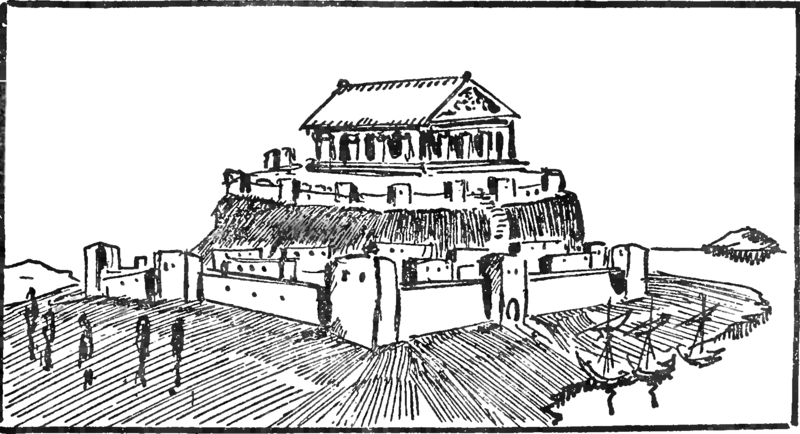Alliance of City-states
The Alliance of City-states comprised a number of the city-states that surrounded Pearlhal back in the day before the empire.
The alliance's purpose was to end the upstart city of Pearlhal and hopefully destroy the Crienia people as the surrounding city-states viewed the people as an insult against the gods. Hence, a number of the city-states held a conference in secret to which other states were invited. The founding states appealed to the kinship of the city-states and that they all had a common goal to destroy Pearlhal now that the city had lost the protection of the Ancient Empire.
The alliance had set up a system for which member states should pay tribute to the coalition, and some states were to provide soldiers while others would bring the cavalry. Many member states were eager to bring as much to the alliance as possible to get a more significant cut of the loot and territory once Pearlhal had been defeated and the looting and cutting up of territory could begin.
Alliance expansion
Between 63 and until the war that would, later on, be known as First unification war, the alliance were eager to recruit as many members as possible, for the two reasons being that a more extensive alliance meant that there were fewer potential alliances for Pearlhal to seek and the other reason is that more members would mean that the original members would suffer fewer casualties and therefor could come out on the other side in a stronger position.The scale of ambition
The scale of the alliance's ambitions can be seen in four developments. First, the alliance tried to use its newfound military force to subjugate a city-state on the now Clifican side of the narrow sea, this city was at this time one of the largest port cities in the area, and its territory was rich in plantages of olive, apples and wine. The second development was that the alliance made a defensive alliance with another city-state further inland. Modern scholars have seen this as the alliance laying the foundation for further expansion and that the alliance's purpose may not only be defensive, but the founders had the intent of creating something that could evolve into an empire with them in control. The third development was that the alliance had finished the construction of a project that had been underway for decades beforehand, this being a road network that would connect all the capital cities of the original member states with several coastal cities, and this road was heavily guarded would in the minds of the leaders mean that they would be able to maintain open supply lines even of Pearlhal were to send raiders into their territory. The fourth and final development was that the alliance had bullied some of the temples of the major deities to pretend that the gods were on the side of the alliance, this would in the first decade of the war, make sure that the alliance had a steady supply of troops but as the war dragged on, the belief that the gods were on the side of the alliance began to fade.Slow decline
To the surprise of many at the time, it wasn't the alliance that began the First Unification War; instead, Pearlhal marched over the borders first and made a preemptive strike against several bases along its border. These bases were housing the units designated for the invasion of Pearlhal the following year, in 65. As the war dragged out and one decade turned into the next, the race for securing alliances began. It was this race that many scholars have given as the reason for the war kept dragging on as both sides gained access to more resources and manpower, along with several new fronts being opened, sometimes behind the frontlines as city-states were persuaded to switch sides. Other scholars have argued that it wasn't the alliance that kept dragging the war on, it was Pearlhals advance, and they didn't seem to want to accept a peace that made city-states further inland join the alliance. This, in return, meant that in Pearlhals eyes, their enemy kept expanding; therefore, their armies had to march further and further.Disbandment
The Alliance were finally officially disbanded when the last city-state of Pashire surrendered after two years of siege.
Military
When the alliance was officially revealed in 63, it had a military power that outnumbered its enemy five to one.
DISBANDED/DISSOLVED
63 - 842
Type
Alliance, Generic
Currency
The alliance didn't have a single currency, but a few years into the war, a law was passed that made it so that the currency of the city-states could be used in other member states.
- Scholars have found a set of documents that revealed that when the alliance won, the alliance would not be dissolved.
- By the year 250, Pearlhal were recruiting soldiers from the conquered cities of the original member states.



Comments